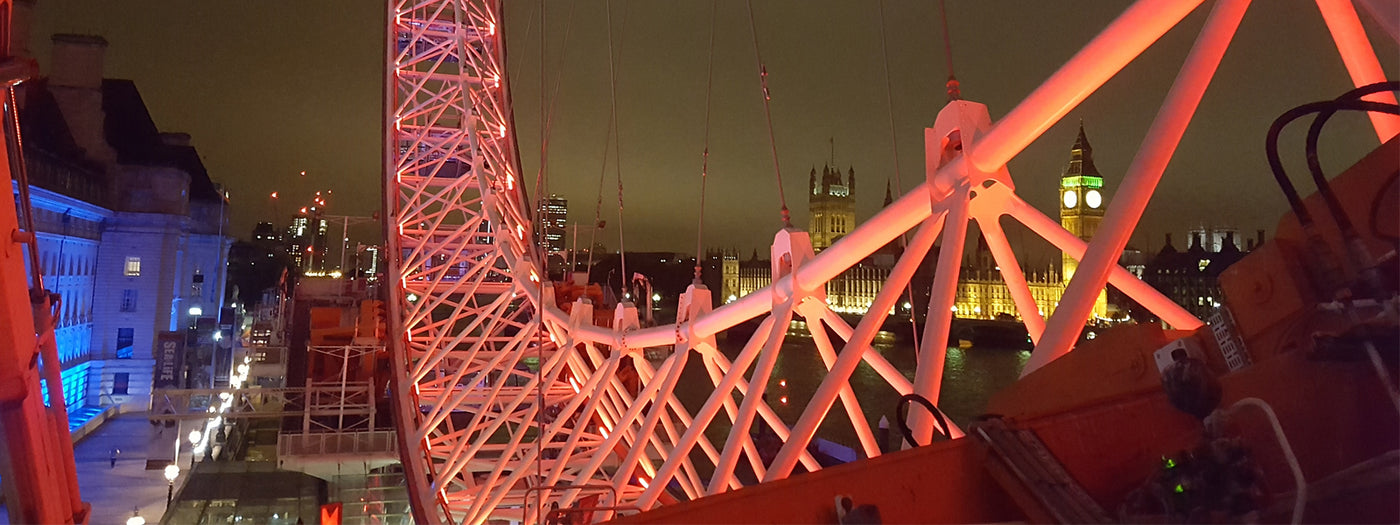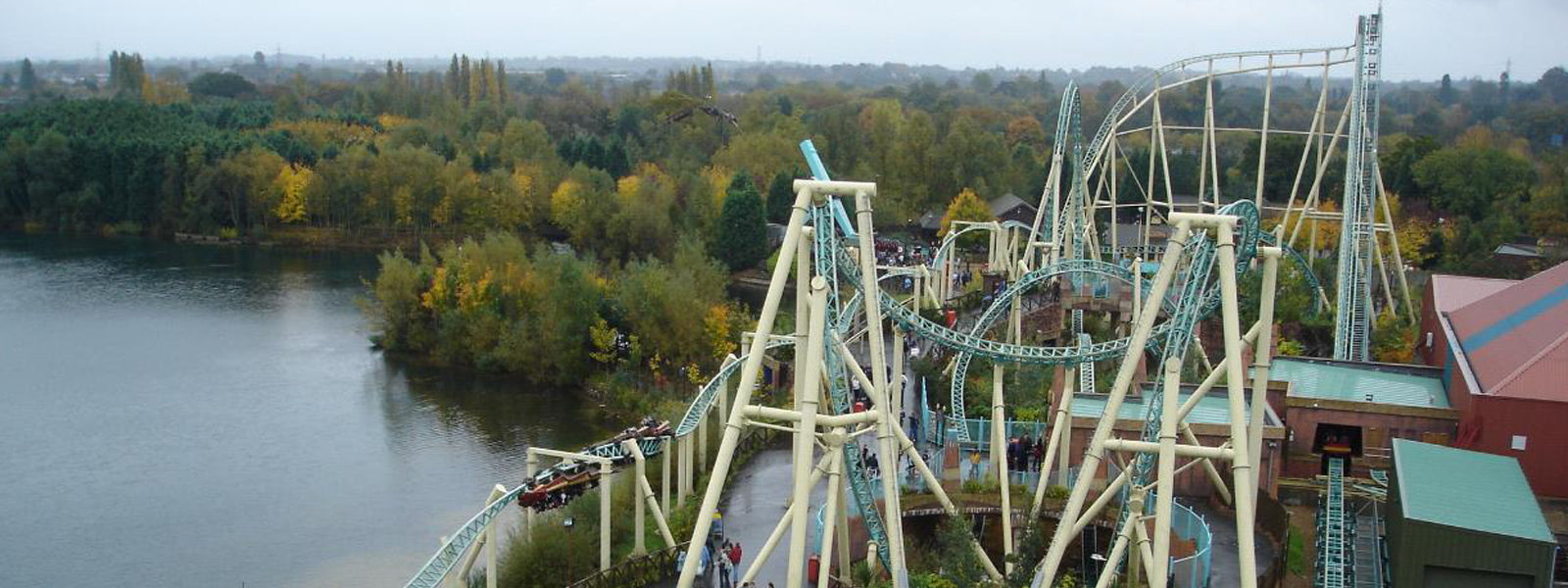The London Eye: Cutting edge solutions for cutting edge architecture

Without doubt one of our most prestigious projects in our 30 year history, Skyview Systems was excited to be selected to partner the London Eye team to design, install and maintain a sophisticated wind alarm system to guarantee visitor safety and comfort, and to comply with stringent health and safety legislation.
About the London Eye
Standing at 135m, the award-winning Coca-Cola London Eye is the largest observation wheel in the world. The stunning structure was opened to the public in 2000 to celebrate the turning of the millennium. It has been offering visitors a spectacular birds’ eye view across an approximate 30-mile radius of London ever since.
Originally intended to be a temporary structure, the London Eye initially had planning permission for just five years. Now an iconic part of the London skyline, the London Eye welcomes roughly 3.5 million visitors every year. With over 85 awards for national and international tourism, outstanding architectural quality and engineering achievement, the London Eye remains one of the UK’s number one visitor attractions.
The Requirement
Visitor attractions must adhere to very strict safety legislation. HSG175 - The Health & Safety Executive - Guidance on safe practice highlights the importance of dynamic weather monitoring for attractions and amusement park operators, in order to be able to react to changes in weather condition – hence the importance for alarm-based weather systems.
At such height, wind speed and wind direction can have a significant effect on the operation of the wheel. The team at the London Eye required a system that would accurately monitor wind conditions and alert them accordingly to take vital operational decisions.
The structural design consultants specified two alarm criteria:
- the activation of an “amber” alert triggers a structural inspection; and
- the activation of a “red” alert triggers immediate shutdown.
The system needed to be fail-safe, with the capability to monitor variables, record data, and provide instantaneous alarms to the onsite engineers.
Our Solution
The design of the weather system had to overcome various technical challenges and measurement considerations, whilst remaining aesthetically sympathetic to the impressive structure design.
The London Eye required multiple monitoring locations. Unique sensor mountings were installed, alongside instantaneous output of data and the facility to alert staff to hazardous situations.
Skyview provided a system which incorporated the following:
- x3 wind monitoring stations with OMC-160 wind sensors: one high-level hub sensor and two lower level sensors;
- OMC-2650 Data Capture Unit with the ability to log results once per second;
- Skyview computer software, providing data logging and trending information – crucial to decision-making;
- continuous display of the data on a digital OMC 138 display with alarms; and
- SMS alerts with pre-selectable alarms provided from the OMC-2650 Data Logger through the GSM network.
The high-specification OMC-160 wind and direction sensors were mounted at optimum measurement points on the main structure of the Eye; one high-level hub sensor and two lower level sensors to provide multiple monitoring. They were then programmed to transmit signals back to the monitoring station once every second. The station has the capacity to collect data instantaneously, as well as at two and ten minute averages. The collected wind data provides trends so that essential operational decisions can be made.
A 4th “virtual” wind sensor is derived from the maximum speed from all three real sensors and presented to the ride operators. The multiple wind speed recording detected over a variable time base enables crucial warnings and shutdown alerts.
The OMC-2650 Data Capture Unit allows data from each sensor to be recorded on a data logger for engineering analysis. The data logger also transmits the data once per second to Skyview’s bespoke software system. This enables local display of graphs, data tables and safety alarms - critical for site safety.
Skyview used the latest GSM technology to enable alerts to be received via mobile phone devices, to ensure that the engineers are kept informed of weather conditions wherever they are. When wind speeds exceed safe operational limits, the on-site engineers are immediately sent an alert to the specified mobile phone device.


